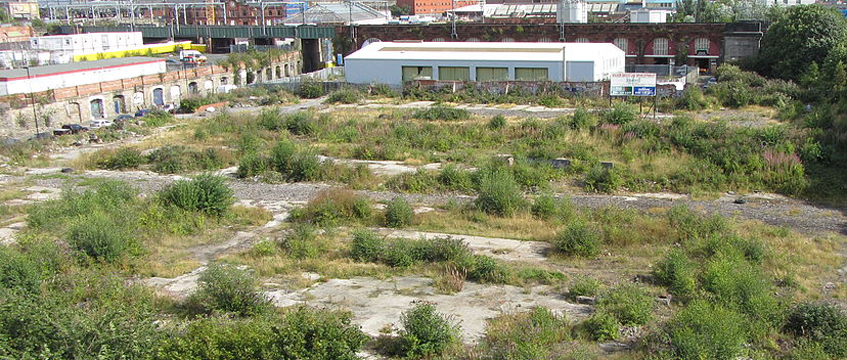On 8 October 2020 the Environment Agency published its new guidance document: Land contamination: risk management (LCRM). It replaces the previous guidance – Model Procedures for the management of land contamination – contaminated land report (CLR11) – which was first published in 2004 as a research document and was subsequently developed to provide a technical framework to deal with contaminated land.
The LCRM is similar in scope and purpose to the CLR11, by helping assess if there is an unacceptable risk of land contamination, setting out which options are most suitable to manage the risk, and providing guidance on implementing a remediation strategy if needed. It can be used in a wide variety of contexts, such as when land has been designated as contaminated under Part 2A of the Environmental Protection Act 1990, as part of a planning application for redevelopment of the site, or to undertake voluntary remediation to assist in the purchase, transfer or sale of the property.
Anyone responsible for managing land which may be subject to contamination is expected to follow the LCRM, and so the guidance is relevant for landowners, developers, planners and regulators. If you or your clients are responsible for managing land which may be subject to contamination then you need to become familiar with the new guidance.
What is contaminated land?
The LCRM confirms that the guidance applies to:
- all land affected by contamination, which might have contamination present and which may, or may not, meet the statutory definition of contaminated land in the 1990 Act; and
- land which has been designated as contaminated land under Part 2A of the 1990 Act.
The LCRM is clear that its application is not limited to property falling within the statutory definition of contaminated land under Part 2A of the 1990 Act, as it has a much wider remit.
Land contamination can harm human health, soils, ecosystems, property, drinking water, groundwater and surface water, so it is important that any potential new pollution is dealt with and historic contamination managed in accordance with the LCRM.
The new guidance: LCRM
The LCRM is split into four sections:
1. Before you start the risk assessment process
The first guidance note acts as an introduction to the next three stages of the framework. An overview of the rest of the guidance is given, as well as useful definitions of terms such as who is considered a “qualified/competent person” and “land contamination”.
2. Risk assessment
The first of the three stages focuses on a technical approach, dividing the process into three “tiers”:
(i) Preliminary risk assessment (PRA);
(ii) Generic quantitative risk assessment (GQRA); and
(iii) Detailed quantitative risk assessment (DQRA). Emphasis has also been placed on site inspections, in order to conform with British Standards.
You must always begin with a tier-one risk assessment, although it is not always necessary to progress to tier two or three. The PRA involves a desk study, site walkover (among other stages), and a decision as to whether a further investigation is required.
If potential contaminant linkages are identified, then you will need to proceed to tier two. A GQRA includes further desktop processes and usually involves a detailed intrusive site investigation (for example, the digging of trial pits and boreholes) and the development of a conceptual site model. Links to external resources, such as assessment criteria (for example, to the CL:AIRE guidance on soil guideline values) are provided, keeping the LCRM itself simple and uncluttered.
If potential contaminant linkages are found to require detailed assessment, a tier-three DQRA will need to be undertaken. This may include developing more bespoke tools, such as site-specific assessment criteria, and undertaking supplementary site investigations, which would usually be undertaken on potential receptors as well as the risks and pathways.
3. Options appraisal
The second stage follows three steps:
(i) identifying feasible remediation options;
(ii) undertaking a detailed evaluation of options; and
(iii) selecting final remediation options.
The guidance provides useful information on the different options available and usefully includes a remediation options applicability matrix – a tool that covers common methods used for remediation of particular contaminant type combinations. The EA has received lots of feedback on this matrix, and it is expected that this will be updated and amended further in the future.
4. Remediation and verification
The final stage focuses on how to develop and implement a remediation strategy, and how to verify that strategy.
There are four main stages:
(i) develop a remediation strategy;
(ii) remediate;
(iii) produce a verification report; and
(iv) undertake long-term monitoring and maintenance, if required.
Emphasis has been placed on adopting a more sustainable approach to remediation treatments, in accordance with the Sustainable Remediation Forum UK Framework.
What’s new in the LCRM?
While the aims and principles of the guidance remain the same as with CLR11, the new LCRM is designed to be much simpler and more user-friendly. One of the notable differences is that the LCRM is accessible from a dedicated government web page, where it can be viewed and downloaded as four separate HTML files (rather than the old gov.uk manual), making it easier to access and digest.
Other differences include simplifying the guidance on the remediation process, with emphasis being put on a single sustainable remediation strategy, including the site investigation section as an integral part of the risk assessment guide, and including reporting requirement checklists at the end of each stage.
Overall, the guidance has achieved its aims of being simpler and more user-friendly, while maintaining the guidance’s relevance to professionals and those more experienced in managing contamination risks by including hyperlinks to more detailed resources.
Alexandra Jones is an associate in the planning and environment team at Brabners








